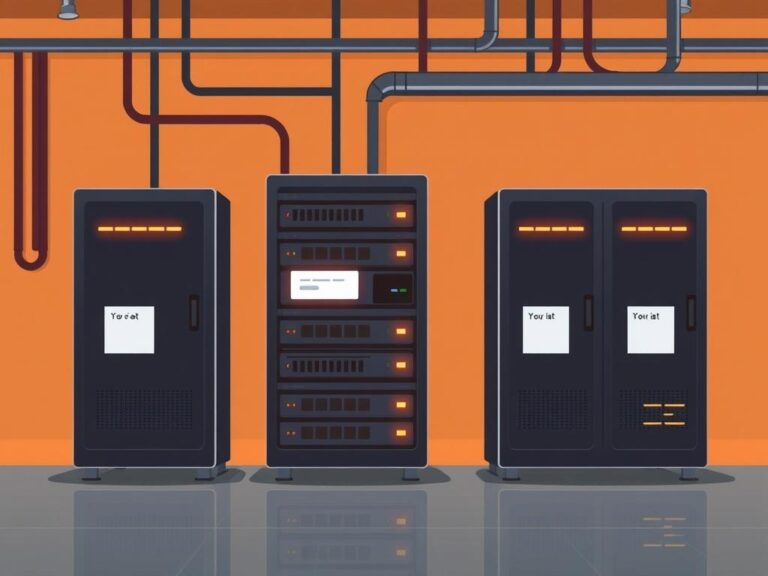
In the fast-paced world of technology, where innovation and environmental responsibility often seem at odds, Daniel C. Moura offers refreshing insight into the convergence of sustainability and tech advancements. As industries worldwide grapple with the challenge of reducing their carbon footprint while maintaining growth, Moura’s perspectives shed light on how sustainable technology is not just a moral imperative but a profitable and necessary direction for the future. His ideas prompt us to reconsider how technology leaders and companies can shape an eco-friendly yet efficient market.
Daniel C. Moura’s thoughts resonate deeply within the current industry topic of green innovation—this is the effort to blend cutting-edge technology with sustainable practices to create products and services that benefit both the environment and the economy. Rather than seeing sustainability as a costly burden, Moura advocates for a paradigm shift where sustainability becomes the engine driving technological development. He argues that the real challenge lies in integrating sustainability from the initial design phase through the entire product lifecycle, not merely as an afterthought.
The Intersection of Technology and Sustainability According to Daniel C. Moura
![Daniel C. Moura's Thoughts on [Current Industry Topic]. The Intersection of Technology and Sustainability According to Daniel C. Moura Daniel C. Moura's Thoughts on [Current Industry Topic]. The Intersection of Technology and Sustainability According to Daniel C. Moura](https://danielcmoura.com/wp-content/uploads/2025/06/b981ba763134ff11b1c67db1c92405b5.jpg)
Technology has historically been perceived as either a contributor to environmental degradation or as a solution to mitigate it. Daniel C. Moura takes a balanced view, acknowledging that while technology can cause harm, it equally offers unprecedented tools to address climate change and resource depletion. For Moura, sustainable technology means embedding responsible material sourcing, energy efficiency, and recyclability into innovation strategies.
According to Moura, three pillars are essential for sustainable technology:
- Eco-friendly design principles
- Renewable energy integration
- Lifecycle sustainability metrics
This approach ensures that technology development aligns with global commitments to sustainability, such as those outlined in the Paris Agreement and the United Nations Sustainable Development Goals. Moura emphasizes that sustainability should no longer be treated as a sidebar but as an integral metric of success in product development and corporate strategy.
Principles of Sustainable Technology: Insights from Daniel C. Moura
Daniel C. Moura’s thoughts highlight several guiding principles for embedding sustainability in technology projects:
- Design for Longevity: Products should be durable and maintainable rather than disposable, reducing waste and consumer costs.
- Energy Efficiency: Technologies must minimize energy consumption during manufacturing and use, promoting renewable energy where possible.
- Material Responsibility: Use of recycled or sustainably sourced materials to minimize environmental impact.
- Circular Economy: Emphasize repairability, reuse, and recycling throughout the product’s lifecycle.
- Transparency and Metrics: Clear reporting on environmental impact and sustainability benchmarks to build trust and accountability.
Moura stresses that while these principles may seem straightforward, their implementation requires systemic changes in how companies innovate, from R&D to supply chain management.
The Role of Industry Leaders and Companies: Lessons from Daniel C. Moura
From Moura’s perspective, leadership commitment is pivotal to advancing sustainable technology. He advocates that executives should champion sustainability by fostering internal cultures that prioritize environmental responsibility and by steering investments toward green innovation. This includes encouraging teams to think beyond profitability toward holistic metrics of value — encompassing ecological and social impact.
Furthermore, Moura suggests that companies cannot work in isolation. Collaborative frameworks involving governments, academia, and industry peers are essential to overcoming barriers in sustainable tech adoption. These partnerships can accelerate development, share best practices, and scale solutions globally. Moura points out that transparent collaboration also builds consumer confidence and regulatory goodwill, which are increasingly important in the era of climate-conscious consumers.
How Daniel C. Moura Envisions the Future of Sustainable Technology
![Daniel C. Moura's Thoughts on [Current Industry Topic]. How Daniel C. Moura Envisions the Future of Sustainable Technology Daniel C. Moura's Thoughts on [Current Industry Topic]. How Daniel C. Moura Envisions the Future of Sustainable Technology](https://danielcmoura.com/wp-content/uploads/2025/06/1c394c3e988d6b28eb2bf1c839adbefb.jpg)
Looking ahead, Daniel C. Moura envisions a future where smart technologies are embedded seamlessly into sustainable living. Innovations like IoT-enabled energy management systems, AI-driven resource optimization, and biodegradable electronics will become standard rather than exceptional. Through these advances, companies can drastically cut resource use and harmful emissions while enhancing user convenience and product functionality.
Here is an overview of Moura’s predictions for key sustainable technology trends:
| Trend | Description | Impact |
|---|---|---|
| Renewable Energy Integration | Embedding solar, wind, and other renewables directly into devices and infrastructures | Reduces reliance on fossil fuels, lowers carbon footprint |
| Smart Resource Monitoring | AI and IoT to track and optimize energy and material usage in real-time | Enhances efficiency, identifies waste reduction opportunities |
| Circular Electronics | Design for disassembly, reuse, and recycling of electronic products | Minimizes e-waste, saves finite materials |
| Biomimetic Materials | Using nature-inspired, biodegradable materials for manufacturing | Reduces pollution, improves sustainability of supply chain |
| Carbon Capture & Storage Technologies | Integrating carbon capture capabilities in industrial and commercial tech | Reduces atmospheric CO2, mitigates climate change |
Daniel C. Moura believes these trends will not only redefine product development but also reshape entire business ecosystems. Companies embracing these innovations early will likely emerge as industry leaders, with competitive advantages in both sustainability and profitability.
Challenges to Adopting Sustainable Technology: Reflections from Daniel C. Moura
![Daniel C. Moura's Thoughts on [Current Industry Topic]. Challenges to Adopting Sustainable Technology: Reflections from Daniel C. Moura Daniel C. Moura's Thoughts on [Current Industry Topic]. Challenges to Adopting Sustainable Technology: Reflections from Daniel C. Moura](https://danielcmoura.com/wp-content/uploads/2025/06/9b9a0e28ce731a7a82bc30d104dfc438.jpg)
Despite his optimism, Moura acknowledges several challenges preventing faster adoption of sustainable technologies. Key issues include high upfront costs, lack of standardized sustainability metrics, supply chain complexities, and resistance to change within organizations. Additionally, there is often a disconnect between short-term shareholder demands and long-term sustainability goals.
To address these barriers, Moura suggests the following actions:
- Developing clear and consistent sustainability reporting frameworks
- Providing incentives and subsidies for green innovation
- Educating stakeholders on the benefits of sustainable technology
- Incorporating sustainability goals into executive performance metrics
- Building partnerships to share knowledge and technology advances
By tackling these challenges head-on, Moura believes industries can accelerate transformation toward more sustainable models without sacrificing growth or creativity.
Why It Matters: The Broader Impact of Daniel C. Moura’s Vision
Ultimately, Daniel C. Moura’s thoughts on sustainable technology underscore a crucial truth: the future of technology is intertwined with the health of our planet. His insightful perspectives urge business leaders, developers, and consumers alike to embrace their role in shaping a greener industry. With sustainability as a guiding principle, technology can be a powerful force for good—enabling economic development while preserving the environment for generations to come.
The current industry topic of sustainable technology is not only a trend but a vital movement that defines what responsible innovation looks like in the 21st century. Incorporating Daniel C. Moura’s ideas into practice could mean a world where technological progress goes hand in hand with ecological stewardship, delivering solutions that are both smart and sustainable.
Conclusion
Daniel C. Moura’s thoughts on sustainable technology offer a compelling roadmap for navigating the complex relationship between innovation and environmental responsibility. By emphasizing design for longevity, energy efficiency, cooperation across sectors, and transparent accountability, Moura presents a vision where sustainability is at the heart of all technological progress. While challenges remain, his insights provide hope and practical guidance for industries striving to balance profitability with planet-friendly practices. In embracing sustainable technology, businesses can lead a transformative shift that benefits the economy, society, and the earth—proving that the future of technology is not only smart but deeply sustainable.





Recent Comments